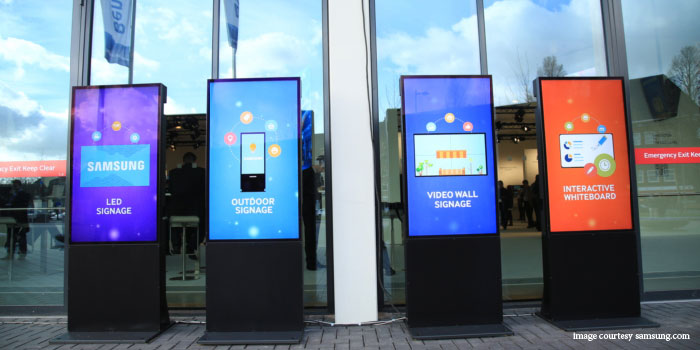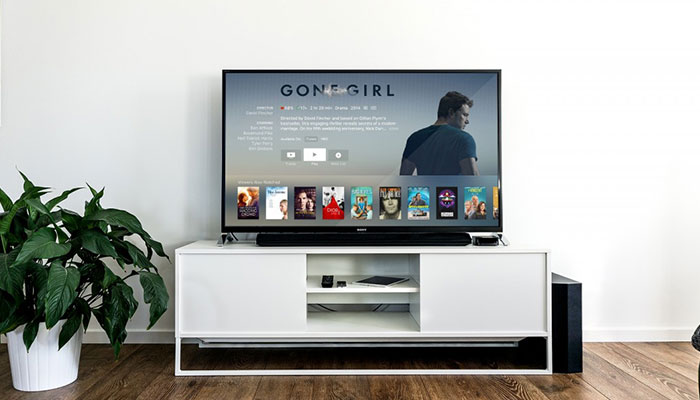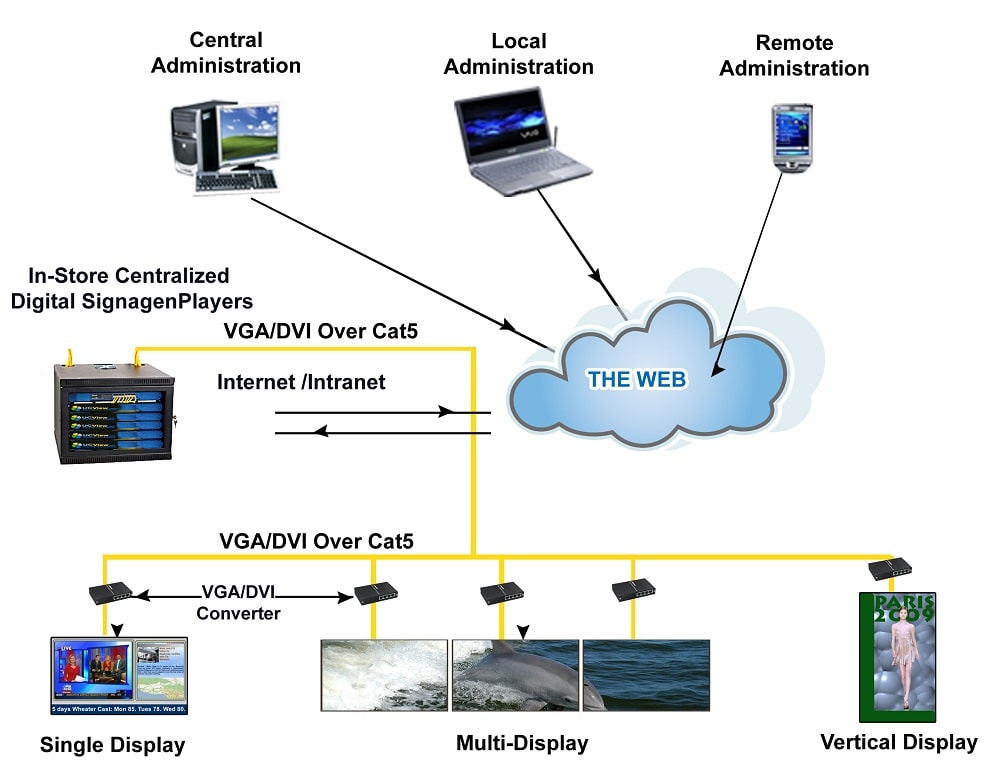
Factors |
Traditional Signage |
Digital Signage |
Power |
No power, no problem Unlike a digital signage which requires a power supply to operate, a traditional signage does not. It will continue to advertise your brand and message without any power. |
Power is required Power is required for the digital signage to function. |
Reliability |
Highly reliable A traditional signage is very reliable because it doesn’t have multiple moving parts like a digital signage. Once the signage is installed (properly), it will continue to advertise your message until it is taken down. |
Multiple moving parts involved There are a lot of components involved in making sure the digital signage works such as TVs, media players, routers, internet connection, and CMS software. If one of these components breaks down, the digital signage will stop functioning.Here is an example of what goes on behind the scenes for digital signage to operate.
|
Setup location |
Setup anywhere A traditional signage can be setup anywhere. You can setup a signage at the top of Mt Everest or in the Great Barrier Reef and it will do fine. |
Limited setup location A digital signage can only be setup at a location where there is a power source. However, with the advancement of battery technology and the reduction of its costs, the location where a digital signage can be setup will continue to increase over time. |
Upfront cost |
Minimal upfront cost With the advancement of digital printing technology, the prices of any print-related signage have gone down dramatically. As a comparison, a 55″ digital signage screen will cost you approximately $2,200. This is excluding installation, media players, and software licensing fees. A vinyl banner of a similar size will cost you just $100. A digital signage is 22x more expensive than a vinyl banner. |
High upfront cost Here are some rough numbers on the upfront costs of a digital signage:
There are also ongoing and maintenance costs involved in making sure the digital signage works. |
Maintenance cost |
Little to no maintenance cost Once the signage is up, it is up and requires little to no maintenance. |
Ongoing maintenance costs There are multiple recurring maintenance costs associated with digital signage such as software licensing fees, electricity costs, maintenance, and repairs. Most customers overlook this cost and do not account for this in their signage budget. |
Changing the graphic |
Manually change it over To change the graphic on the signage, someone has to be on-site to change it over. In most cases, an installer is hired to do the job. |
Instantly with a few clicks Changing the graphic on your digital signage requires just a few clicks of a button.  |
Interactiveness |
Limited interactivity The graphic on the signage is static. There are some creative things you can do with the graphic such as making it look 3D but that’s about it. |
High level of interactiveness You have the option to do almost anything with your digital signage such as adding touch capabilities, video, and audio. You can also add as many graphics to your digital signage as possible. Each digital signage can also be customised to show a unique graphic for that specific location. |
Exposure |
Dollar for dollar, traditional signage wins With $2000, you can get a 55″ digital signage screen. 
With that same $2000, you can get a 100m mesh banner. Dollar for dollar, traditional signage will grab more attention than digital signage.
|
Better in an indoor setting If money isn’t an issue then digital signage of a similar size will grab more attention than traditional signage because of its interactive capabilities. However, in most cases, the budget is always the top or one of the top priorities when it comes to signage. |
Summary
Pros of traditional signage
- No power, no problem
- Highly reliable
- Setup anywhere
- Minimal upfront cost
- Little to no maintenance cost
- Dollar for dollar, traditional signage will grab more exposure
Cons of traditional signage
- Graphics have to be manually changed over
- Limited interactivity
Pros of digital signage
- Graphics can be changed instantly with a few clicks
- High level of interactiveness
Cons of digital signage
- Power is required
- Multiple moving parts involved
- Limited setup location
- High upfront cost
- Ongoing maintenance costs

